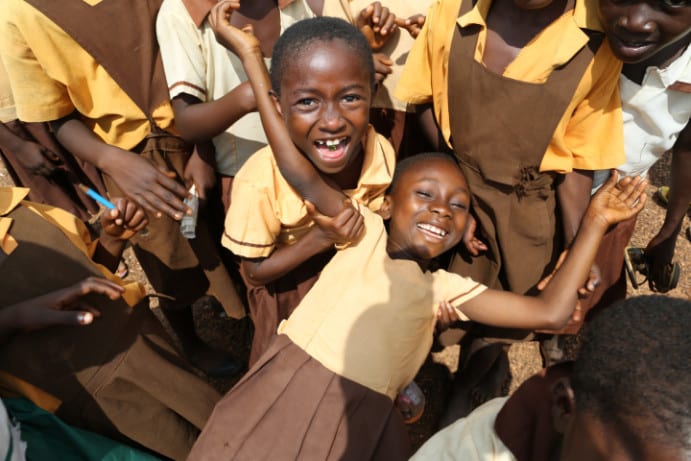Unleashing the Power of Media Literacy: Why Africa’s Nonprofits Must Invest in Building Digital Bridges
In today’s rapidly evolving digital landscape, the ability to navigate, understand, and critically evaluate the plethora of information that bombards us daily is more crucial than ever. This skill, known as media literacy, serves as the backbone of a well-informed and engaged society.
For Africa, a continent bustling with potential yet hindered by various challenges, the urgency to embrace and invest in media literacy cannot be overstated.
This article delves into the essence of media literacy, its paramount importance, and how Africa’s nonprofits can play a pivotal role in bridging the digital divide, ultimately empowering communities and fostering a culture of informed knowledge creation.
Understanding Media Literacy and Its Importance
Media literacy encompasses a range of competencies that enable individuals to critically engage with media content. It is about understanding the role of media in society, recognizing the various formats media can take, and discerning the underlying messages conveyed.
Importantly, media literacy empowers individuals to not only consume content passively but also to create and participate actively in the media landscape.
In the context of Africa, where information can be a double-edged sword—either a tool for empowerment or a vehicle for misinformation—the importance of media literacy cannot be overstated.
For nonprofits working across the continent, the cultivation of media-savvy communities is imperative. Such communities are better equipped to navigate the complex information ecosystem, make informed decisions, and engage with media in a way that promotes their well-being and development.
Moreover, media literacy fosters a critical understanding of media’s influence on culture and society. It encourages individuals to question and reflect upon the myriad of messages that media disseminates, promoting a more discerning and participatory civic engagement.
This critical engagement is essential for the health of democracies, especially in a diverse and multifaceted continent like Africa.
The Digital Divide and Its Impact on Africa’s Nonprofits
The digital divide—the gap between those who have access to modern information and communication technology (ICT) and those who do not—presents a formidable barrier to media literacy in Africa.
Many communities across the continent face significant challenges in accessing reliable internet and digital devices, which are fundamental tools for engaging with digital media. This divide not only hampers the ability of individuals to access valuable information but also limits their participation in the digital economy and society at large.
Africa’s nonprofits, striving to address a myriad of social, economic, and environmental issues, find this digital divide particularly troubling. It constrains their capacity to reach and engage with the communities they serve.
Moreover, the digital divide exacerbates existing inequalities, making it harder for underserved populations to benefit from digital advancements and the opportunities they present.
The impact of the digital divide extends beyond immediate access to technology. It influences the development of critical thinking and digital literacy skills, which are essential for navigating today’s complex media landscapes.
Without these skills, individuals are at a greater risk of being misled by misinformation and disinformation, which are increasingly prevalent in digital spaces.
Building Digital Bridges: Bridging the Gap Between Technology and Underserved Communities
To combat the challenges posed by the digital divide, it is imperative for Africa’s nonprofits to invest in building digital bridges. These bridges are metaphorical pathways that connect underserved communities with the digital world, enabling access to information, resources, and platforms for self-expression and civic participation.
One effective strategy for building these bridges is through the establishment of community information centres equipped with internet access and digital devices. These centres can serve as hubs for digital literacy training, providing a space for individuals to learn, create, and engage with digital content under the guidance of skilled facilitators.
Additionally, mobile technology, which has seen exponential growth across Africa, presents a unique opportunity for reaching remote or underserved populations.
Nonprofits can leverage mobile platforms to deliver educational content, create interactive learning experiences, and foster community engagement through social media and messaging apps.
Building digital bridges also involves advocating for policies that support digital inclusion and the development of ICT infrastructure. By working collaboratively with governments, the private sector, and international partners, nonprofits can help ensure that digital advancements benefit all segments of society, particularly those who are most vulnerable.
The Power of Knowledge Creation: Empowering Communities and Young People Through Media Literacy
At the heart of media literacy lies the power of knowledge creation. By equipping individuals, especially young people, with the skills to critically engage with media, we empower them to become not just consumers of content but also creators.
This shift from passive consumption to active participation has profound implications for personal development, community empowerment, and societal progress.
Empowered with media literacy skills, young people can harness the power of digital tools to tell their own stories, express their views, and advocate for change.
This is particularly crucial in Africa, where the youth demographic represents both a significant challenge and an unparalleled opportunity for development.
By fostering a generation of critical thinkers and skilled communicators, nonprofits can help cultivate leaders who are capable of addressing the continent’s complex issues in innovative and impactful ways.
Moreover, when communities are empowered to create and share knowledge, they can challenge narratives that perpetuate stereotypes, inequality, and injustice.
Media literacy enables individuals to critically analyse media representations, question biases, and contribute to a more inclusive and diverse media landscape. This, in turn, strengthens community voices, ensuring that a broader spectrum of experiences and perspectives is heard and valued.
Strategies for Nonprofits to Invest in Media Literacy Programs
For nonprofits committed to advancing media literacy in Africa, several strategies can be pivotal in maximising impact.
Firstly, integrating media literacy into existing education and outreach programs can provide a cost-effective way to reach a wider audience. This could involve incorporating critical thinking and digital literacy skills into school curriculums, community workshops, and online learning platforms.
Secondly, training trainers is an essential strategy for scaling media literacy efforts. By equipping educators, community leaders, and youth workers with media literacy skills, nonprofits can create a multiplier effect, extending the reach of their programs and fostering sustainable change.
Collaboration is another key strategy. By partnering with media organisations, technology companies, and other nonprofits, organisations can pool resources, share expertise, and amplify their impact.
Such partnerships can also facilitate the creation of locally relevant content, which is crucial for engaging audiences and addressing specific community needs.
Lastly, leveraging technology to deliver media literacy programs can help overcome geographical and logistical barriers. Online courses, mobile apps, and interactive platforms offer flexible and accessible ways for individuals to develop media literacy skills, regardless of their location.
Case Studies: Successful Initiatives in Africa That Promote Media Literacy
Across Africa, several innovative initiatives have demonstrated the transformative potential of media literacy.
One such example is the Media Literacy Project in Kenya, which partners with schools to integrate media literacy into the curriculum. Through workshops, teacher training, and the creation of student-led media clubs, the project has empowered thousands of young Kenyans to critically engage with media and use digital tools for creative expression.
In South Africa, the Digital Literacy Initiative has taken a community-based approach to media literacy. By setting up digital learning centres in underserved areas, the initiative provides access to technology and training for both young people and adults. These centres not only teach digital skills but also encourage participants to explore issues affecting their communities through digital storytelling projects.
Another noteworthy example is the Youth Media Program in Nigeria, which focuses on empowering young people to use social media for social change. By providing training in digital storytelling, citizen journalism, and online advocacy, the program has enabled Nigerian youth to raise awareness of social issues, mobilise support for causes, and engage in meaningful dialogue with policymakers.
These case studies illustrate the diverse ways in which media literacy can be promoted and the significant impact it can have on individuals and communities. They also highlight the crucial role that nonprofits play in driving these efforts forward.
Overcoming Challenges: Addressing Barriers to Media Literacy in Africa
Despite the promising initiatives and strategies highlighted, several challenges remain in advancing media literacy across Africa.
One of the most significant barriers is the persistent digital divide, which limits access to technology and digital learning resources for many communities. Addressing this requires sustained investment in ICT infrastructure and policies that promote digital inclusion.
Another challenge is the lack of awareness and understanding of the importance of media literacy among policymakers, educators, and the general public. This can lead to insufficient support and funding for media literacy programs.
Advocacy and awareness-raising efforts are essential to elevate the profile of media literacy and secure the necessary backing from stakeholders at all levels.
Furthermore, the rapidly changing media landscape presents a challenge for media literacy initiatives, which must continually adapt to new technologies, platforms, and trends. This demands ongoing professional development for educators and program facilitators, as well as flexible and innovative program design.
Collaborating for Success: Partnerships and Alliances in Advancing Media Literacy in Africa
The complexity of the challenges facing media literacy in Africa necessitates a collaborative approach. Partnerships between nonprofits, governments, educational institutions, media organisations, and the private sector can bring together a wealth of resources, expertise, and influence, driving more effective and sustainable outcomes.
Such collaborations can enhance the design and delivery of media literacy programs, ensuring they are relevant, engaging, and accessible to diverse audiences. They can also amplify advocacy efforts, pushing for policies and investments that support media literacy and digital inclusion.
In addition, alliances among nonprofits themselves can facilitate knowledge sharing and capacity building, enabling organisations to learn from each other’s experiences and adopt best practices. This collective effort can create a stronger, more unified voice in championing media literacy across the continent.
Measuring Impact: Evaluating the Effectiveness of Media Literacy Programs
To ensure the success and sustainability of media literacy initiatives, it is crucial to measure their impact. This involves setting clear objectives, identifying key indicators of success, and employing both quantitative and qualitative methods to assess outcomes.
Evaluation can provide valuable insights into what works and what doesn’t, informing program improvements and demonstrating the value of media literacy to funders and stakeholders. It can also highlight the broader social, economic, and political benefits of media literacy, such as increased civic engagement, improved educational outcomes, and reduced susceptibility to misinformation.
However, evaluating media literacy programs can be challenging, given the complex and often intangible nature of the skills and attitudes they aim to develop. This underscores the importance of innovative and rigorous evaluation methodologies that can capture the depth and breadth of media literacy’s impact.
Conclusion: A Call to Action for Africa’s Nonprofits to Prioritize Media Literacy Efforts
As we have explored, media literacy is a critical skill in today’s digital age, offering a pathway to empowerment, civic engagement, and societal progress.
For Africa, with its diverse challenges and immense potential, the stakes are particularly high. Nonprofits across the continent have a pivotal role to play in advancing media literacy, building digital bridges, and creating a more informed, inclusive, and participatory society.
However, this is not a task for the faint-hearted. It requires commitment, creativity, and collaboration. It demands that we invest in our communities and young people, equipping them with the skills to navigate and shape the media landscape.
It calls for us to challenge the status quo, advocate for digital inclusion, and strive for a future where everyone has the opportunity to engage critically with media.
Therefore, let this be a call to action for Africa’s nonprofits and all stakeholders committed to the continent’s development.
Invest in the media literacy of young people and communities. Embrace the power of digital technology as a force for good. And together, let us unleash the full potential of media literacy to transform societies and build a brighter future for Africa.
Invest in media literacy of young people and communities.







